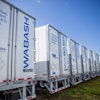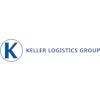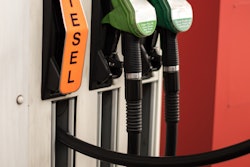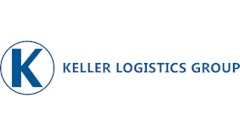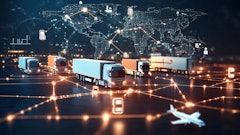
Given shortages and disruptions on top of significant growth in the cold chain, it is no surprise that visibility is a key word in the industry for third-party logistics (3PLs) providers. While some may call visibility a buzz word, and it is used continuously throughout supply chain coverage, there is a reason behind that. It is an extremely important term in the industry right now.
Driver solutions in the cold 3PL space now focus on this concept of visibility. Shippers, brands, retailers and logistics companies alike want to have complete insight into the supply chain. The constant upheaval in the industry today requires a comprehensive look at real-time data. Additionally, the perishable factor in this industry adds greater need for visibility to prevent food waste and the cold sector is much more sensitive to fluctuations in demand.
Technology holds vision
Technology in 3PLs taps visibility to not only help companies better plan their strategies and drive resiliency by taking away the surprise factor of changes in the supply chain, but much of it also drives workflow for the driver. Solutions can combine real-time GPS and time estimates, route optimization, cargo verification, communication with dispatch and integration with electronic logging devices (ELDs) for better compliance management. Software like this drives optimization within trucking. And, with the very infamous and disruptive driver shortage mixed with the newer popularity of direct-to-consumer (DTC) cold chain, this is imperative.
Many experts in the field believe that the driver shortage is more exacerbated through the under utilization of drivers. Fleets can better manager drivers’ time, routes and overall operation with greater visibility and technological tools, among other things like schedules and sourcing locations.
“The biggest challenge in the last 24 months with cold 3PL was 80% consumer spending on goods vs. 20% on services, so goods volume increased, which means more goods needed to be shipped,” says Michael Paul, VP of sales at Sleek Technologies. “Drivers also continue to be misused/ underutilized. For example, a number of cold 3PLs still make drivers pick up between midnight and 7 a.m. Large shippers are starting to take control of their supply chain end-to-end by sourcing raw materials closer to operation locations, along with buying their own trucks/trailers.
“Strong examples of this trend are Sysco and Walmart increasing driver pay for their own fleets to control their own density. Also, companies like General Mills and Constellation Brands are changing some of the ingredients' sourcing locations to eliminate inbound raw materials delays to keep the outbound finished product flow consistent,” he says.
While the industry has been gradually leaning towards greater visibility prior to 2020, thanks to the Amazons of the world driving consumer demand for real-time data, the pandemic and the past two years pushed a need for new driver solutions right to the forefront. Paul explains that the pandemic changed the way consumers lived, which dramatically changes the industry.
Historically, there was not a big cold chain market in DTC, with the cold factor ending at the store or distribution center, says Brian Karwisch, VP of procurement at ODW Logistics. 3PLs must now adapt to that with new driver solutions, and these types of solutions are no longer nice to have, but are an expectation.
Interconnectivity is the future of logistics technology
Unfortunately, with the growth of technology comes growth in the number of different providers and different platforms. So how do 3PLs and drivers manage all these different technologies?
For one, this aspect of technology is slowly but surely changing. Much of the technology in the supply chain focus on doing one thing well but do not interconnect, says Raddy Velkov, VP of carrier sales at BlueGrace Logistics. But today, technology providers are listening to their customers and focusing on driving better communication between platforms as well as the ability to handle numerous functions while maintaining quality ability. One example is BlueGrace’s own, in-house, proprietary, full-service platform, BlueShip. The platform leverages API and EDI connectivity to customers, vendors and carriers while allowing customers and employees to work out of a centralized system.
When investigating and integrating new technology, it is important for 3PLs and logistics companies to clearly define goals needed of these platforms.
“With the increased number of technology platforms that are in the market today, it is critical 3PLs understand the importance of integrating these tools into their transportation management systems,” Karwisch says. “Many of these applications are not a one- size- fits- all solution, so when evaluating technologies, it’s important that your business process flows are properly defined and that the technology you are integrating meets your end goal. Cold chain operational issues are costly so having real time visibility and alerts throughout the product life cycle can prevent costly damages and delays.”
The driver shortage makes things more pressing
Accurate technology is imperative when it comes to pushing optimization for drivers. But correctly utilizing drivers during the shortage and supply chain crisis is imperative and takes other solutions than just recent developments in technology, especially now.
“We were talking about the driver shortage 10 years ago, but it is beginning to reach new all-time highs,” says Velkov. “The American Trucking Association estimates that in 2021 the truck driver shortage will hit a historic high of just over 80,000 drivers. At current trends, the shortage could surpass 160,000 in 2030. Throughout COVID, we have seen an increasing need for refrigerated capacity as a segment of the existing capacity was pulled to supply vital products such as chemical, pharmaceutical, and, ultimately, vaccine distribution.”
Securing driver capacity in this climate is clearly an imperative part of supply chain management today.
Karwisch suggests numerous steps to help in this area such as:
- Establish a trusted dedicated carrier base that can provide a set number of drivers.
- Utilize the spot market strategically for supplemental capacity.
- Integrate with your carriers and automate time- consuming carrier functions.
- Consolidation and optimization of freight will create better trailer utilization and driver friendly routes.
- Treat your carriers as you would your customers. They are a vital part of your supply chain.
However, the journey to securing driver capacity is not as simple as following these steps in a linear fashion. There are numerous pitfalls to pay attention to when it comes to driver solutions for 3PLs.
"There are fewer drivers in the industry now and carriers have been forced to cater to the preferences of the drivers that they do have," says Jerry Critchfield, VP of transportation for Weber Logistics. "For instance, most drivers – especially young drivers – enjoy being home at night. As such, it’s harder for carriers to cover the less popular medium- and long-haul lanes. It’s only by raising the rates that drivers will cover many of these lanes. So, rates go up. For many lanes, cost of delivery has gone up 70% or more over the last two years. So, you can get your product moved, but you will have to pay a premium."
It is important not to just think of today’s problems, but also try to forecast into the future. The reason visibility solutions are so important is because the supply chain is no longer predictable. Business for a 3PL in the cold chain could drastically change in a short time from now. 3PLs must operate with the future in mind. This includes keeping an eye on equipment and maintenance.
For those that own and operate fleets, equipment and machinery, it is exceptionally important to invest in solutions that tap predictive maintenance, especially with the lack of repair parts available right now. Equipment downtime can cost operations significant funds.
But one of the most important aspects to pay attention to when it comes to 3PLs is taking care of the drivers. These employees need to be treated with respect, the same way an airline pilot is treated, says Paul.
“They are professionals that have a very difficult job driving an 80,000K pound machine and trying to navigate through dangerous areas,” he says. “Compensation needs to be adjusted such as increased salaries, stronger benefits, and more work/life balance. There are not enough rest stops that are clean, have healthy food, and where the drivers can get good rest. Our country needs to invest in our supply chain and this pandemic shows we have not done enough.”
Drivers are a vital part of the supply chain, our economy and our overall society. Our solutions for them must keep this in mind .

